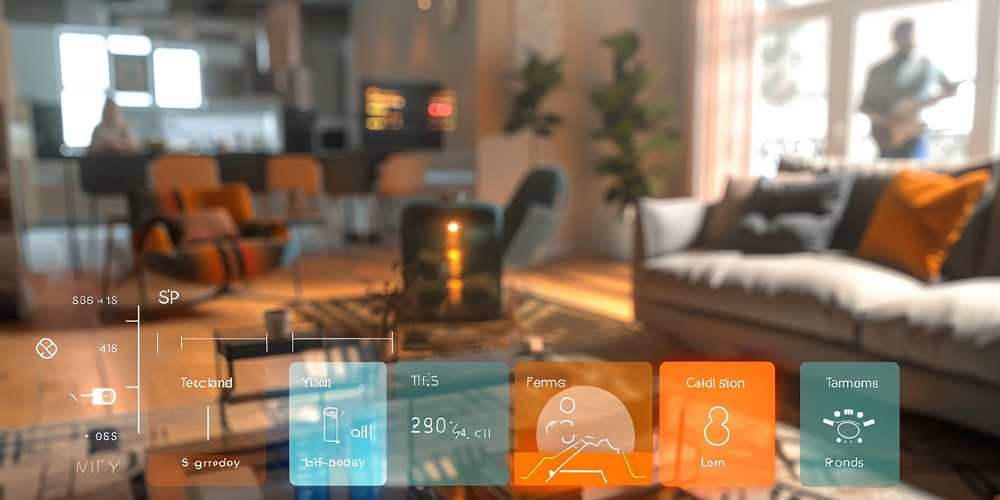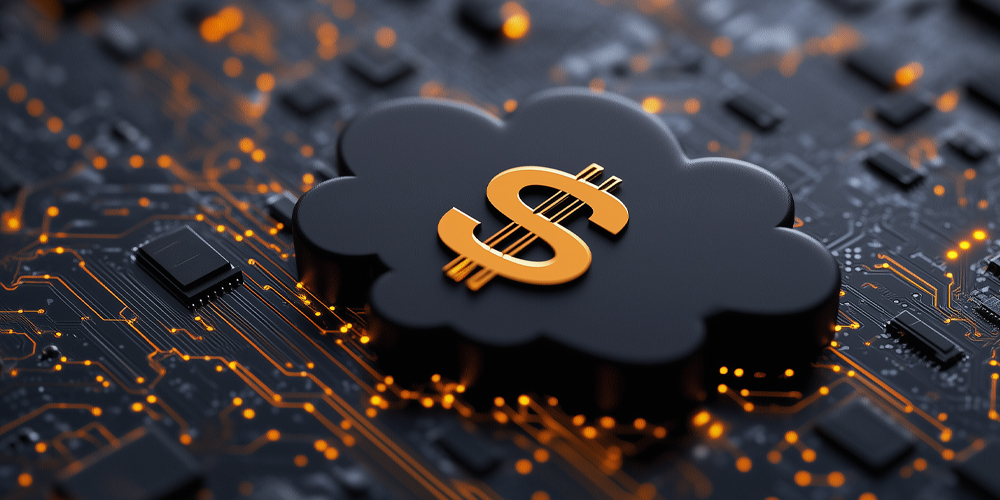How IoT is Transforming Smart Homes
Introduction
The Internet of Things (IoT) is revolutionizing our daily lives, particularly in the realm of smart homes. By connecting devices, IoT enhances convenience, security, and efficiency. As technology evolves, more households are adopting smart devices that improve the quality of life. This article explores how IoT technology is transforming smart homes and the significant impact it has on our lifestyles.
1. What is IoT?
The Internet of Things refers to a network of interconnected devices that communicate and share data. These devices include everything from smart speakers and thermostats to security cameras and kitchen appliances. The goal of IoT is to create a seamless integration of technology in our everyday lives, allowing for better control, automation, and monitoring of home systems.
Key Components of IoT
Key components of IoT include sensors, connectivity, and data processing. Sensors gather data from the environment, such as temperature or motion. Connectivity allows devices to communicate with each other and with users. Finally, data processing turns that information into actionable insights. Together, these components create a smart ecosystem that enhances user experiences.
2. Benefits of IoT in Smart Homes
The integration of IoT in smart homes offers numerous benefits. From enhanced security to energy efficiency, the advantages are compelling. Understanding these benefits can help homeowners make informed decisions about adopting IoT technology.

Enhanced Security
IoT devices, such as smart cameras and door locks, provide increased security for homes. Homeowners can monitor their properties remotely through mobile apps. This capability allows for real-time alerts and surveillance, giving users peace of mind. Smart locks can enable keyless entry, allowing trusted individuals to access the home without physical keys.
Additionally, smart security systems can detect unusual activities and notify homeowners immediately. Integration with other devices, such as smart lighting, can create an illusion of occupancy, deterring potential intruders. Overall, the enhanced security provided by IoT devices contributes to a safer living environment.
Energy Efficiency
Smart thermostats and lighting systems play a crucial role in reducing energy consumption. These devices learn user habits and adjust settings accordingly. For instance, smart thermostats can optimize heating and cooling based on occupancy patterns, leading to significant savings on utility bills. Studies have shown that homes with smart thermostats can reduce energy costs by up to 30%.
Moreover, smart lighting systems allow homeowners to control lighting remotely or set schedules. Users can turn off lights when not needed, reducing energy waste. Some systems even adjust brightness based on natural light, ensuring optimal energy use throughout the day. This focus on energy efficiency is not only cost-effective but also environmentally friendly.
Convenience and Comfort
Smart home devices enhance convenience and comfort. Voice-activated assistants, such as Amazon Alexa and Google Assistant, allow users to control devices hands-free. This feature streamlines daily routines, making life easier for busy households. Imagine waking up in the morning and having the coffee maker start brewing just as you get out of bed.
Smart home technology also enables automation. Homeowners can create routines that automatically adjust settings based on time or activity. For example, lights can turn on at sunset, and the thermostat can adjust as the family arrives home. This level of automation not only saves time but also enhances comfort in daily living.
3. Popular IoT Devices for Smart Homes
Numerous IoT devices are available for smart homes. Here are some popular options that can significantly enhance the functionality of a home:
Smart Speakers
Devices like Amazon Echo and Google Home act as central hubs for smart home control. These smart speakers allow users to interact with other devices through voice commands. For instance, users can ask their smart speakers to turn on the lights, adjust the thermostat, or play music. This hands-free control is convenient, especially when multitasking or when hands are full.
Smart Thermostats
Smart thermostats such as Nest and Ecobee learn user preferences over time and adjust heating and cooling automatically. These devices optimize comfort while minimizing energy use. Users can control their thermostats remotely via mobile apps, ensuring that their homes are always at the desired temperature upon arrival. The convenience of smart thermostats contributes to both comfort and energy savings.
Smart Lighting
Smart bulbs, like Philips Hue, can be controlled remotely or set on schedules. Users can change brightness and color, creating customized atmospheres for different occasions. For instance, homeowners can set the lights to a warm hue for movie nights or brighten them for work sessions. Smart lighting not only enhances ambiance but also promotes energy efficiency.
Smart Security Cameras
Smart security cameras provide real-time video feeds, allowing homeowners to monitor their properties remotely. Many of these cameras come equipped with features like motion detection, night vision, and two-way audio. This functionality enables homeowners to communicate with visitors or potential intruders, enhancing security and peace of mind.
Smart Appliances
From refrigerators that keep track of groceries to washing machines that can be controlled via mobile apps, smart appliances are transforming kitchens and laundry rooms. These devices offer convenience and efficiency, allowing users to manage household chores more effectively. For example, a smart refrigerator can alert users when they are running low on certain items, simplifying grocery shopping.
4. Challenges of IoT in Smart Homes
Despite its benefits, IoT in smart homes faces challenges. Security and privacy concerns are prominent issues that homeowners must consider when adopting these technologies.
Security Vulnerabilities
IoT devices can be vulnerable to cyberattacks. Many devices are connected to the internet, which increases the risk of unauthorized access. Weak passwords, outdated firmware, and unencrypted data can leave systems exposed. It’s crucial for homeowners to implement strong security measures, such as using unique passwords, enabling two-factor authentication, and keeping software up to date.
Privacy Issues
Privacy is another concern with IoT devices. Data collected by these devices may be misused or improperly secured. For instance, smart cameras can record video feeds that may contain sensitive information. Homeowners should be aware of the data privacy practices of the devices they use and understand how their information is stored and shared.
5. The Future of IoT in Smart Homes
The future of IoT in smart homes looks promising. Innovations continue to emerge, making homes smarter and more efficient. As technology advances, the integration of IoT devices will become more seamless, enhancing user experiences.
Interoperability
As more devices become interconnected, interoperability will be key. Standards and protocols must be established to ensure seamless communication among devices from different manufacturers. This will enable users to control all their smart devices from a single platform, enhancing usability and convenience.

Advancements in AI
Artificial intelligence will play a significant role in enhancing IoT functionality. AI can improve device learning and automation, providing even greater convenience. For example, smart home systems can analyze user behaviors and make proactive adjustments to enhance comfort and efficiency. This level of intelligence will create truly autonomous smart homes that adapt to their occupants’ needs.
Integration with Renewable Energy
The integration of IoT with renewable energy sources will also be a significant trend. Smart homes will increasingly utilize solar panels and energy storage systems. IoT technology can help homeowners monitor energy usage, optimize consumption, and reduce reliance on the grid. This shift towards sustainability will not only lower utility bills but also contribute to a greener future.
6. Smart Home Ecosystems
Smart homes are not just about individual devices; they are about creating an integrated ecosystem. By connecting devices, homeowners can create a cohesive environment that works together harmoniously.
Home Automation Systems
Home automation systems, such as Samsung SmartThings and Apple HomeKit, allow users to manage multiple devices from a single interface. These platforms enable users to create custom routines and automations that enhance the functionality of their smart homes. For example, a user can set a routine where lights dim, the thermostat adjusts, and the music plays when it’s time to watch a movie.
Future of Home Automation
The future of home automation lies in increased integration and user-friendliness. As technology advances, these systems will become more intuitive, making it easier for homeowners to manage their environments. Enhanced compatibility among devices will also simplify the smart home experience.
7. Real-Life Examples of IoT in Smart Homes
To better understand how IoT is transforming smart homes, let’s explore some real-life examples of its applications.
Case Study: The Johnson Family
The Johnson family decided to retrofit their home with smart technology. They installed smart thermostats, lighting, and security cameras. The family found that energy bills decreased by 25% within the first few months. Additionally, the peace of mind from the security cameras made them feel safer.
Case Study: Smart Rentals
In the rental market, property owners are increasingly equipping homes with smart technology. By offering smart locks and thermostats, they attract tech-savvy tenants. This trend is reshaping how rental properties are managed and marketed, providing convenience for both landlords and tenants.
Conclusion
IoT is transforming smart homes in unprecedented ways. From enhanced security to energy efficiency, the benefits are clear. As technology continues to evolve, the future of smart homes will offer even more innovative solutions to improve our lives. Homeowners who embrace IoT will enjoy increased comfort, convenience, and security. As we look ahead, the integration of these technologies will create smarter, more sustainable living environments.




